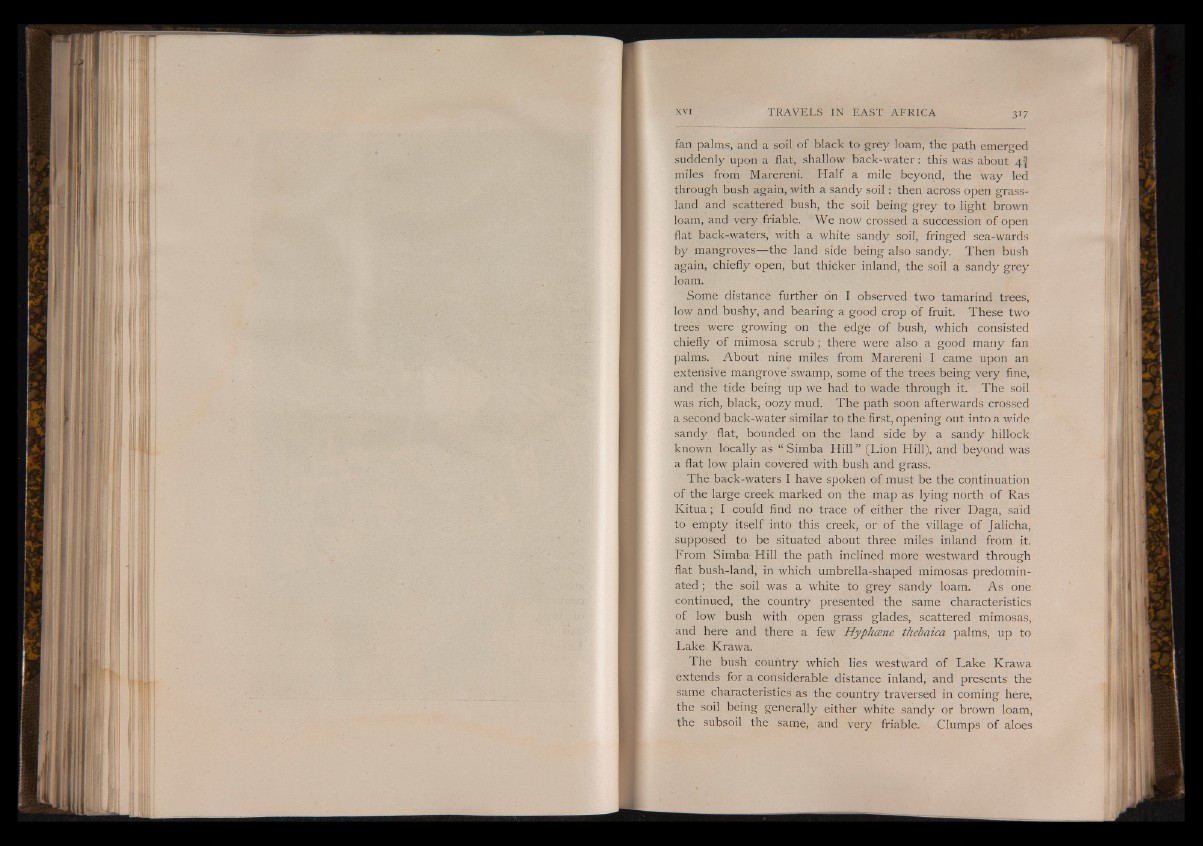
fan palms, and a soil of black to grey loam, the path emerged
suddenly upon a flat, shallow back-water: this was about 4I
miles from Marereni. Half a mile beyond, the way led
through bush again, with a sandy so il: then across open grassland
and scattered bush, the soil being grey to light brown
loam, and very friable. We now crossed a succession of open
flat back-waters,' with a white sandy soil, fringed sea-wards
by mangroves— the land side being also sandy. Then bush
again, chiefly open, but thicker inland; the soil a sandy grey
loam.
Some distance further on I observed two tamarind trees,
low and bushy, and bearing a good crop of fruit. These two
trees were growing on the edge of bush, which consisted
chiefly of mimosa scrub; there were also a good many fan
palms. About nine miles from Marereni I came upon an
extensive mangrove'swamp, some of the trees being very fine,
and the tide being up we had to wade through it. .The soil
was rich, black, oozy mud. The path soon afterwards crossed
a second back-water similar to the first, opening out into a wide
sandy flat, bounded on the land side by a sandy hillock
known locally as “ Simba Hill” (Lion Hill), and beyond was
a flat low plain covered with bush and grass.
The back-waters I have spoken of must be the continuation
of the large creek marked on the map as lying north of Ras
Kitua; I could find no trace of either the river Daga, said
to empty itself into this creek, or of the village of Jalicha,
supposed to be situated about three miles inland from it.
From Simba Hill the path inclined more westward through
flat bush-land, in which umbrella-shaped mimosas predominated
; the soil was a white to grey sandy loam. As one
continued, the country presented the same characteristics
of low bush with open grass glades, scattered mimosas,
and here and there a few Hyphcene thebaica palms, up to
Lake Krawa.
The bush country which lies westward of Lake Krawa
extends for a considerable distance inland, and presents the
same characteristics as the country traversed in coming here,
the soil being generally either white sandy or brown loam,
the subsoil the same, and very friable. Clumps of aloes